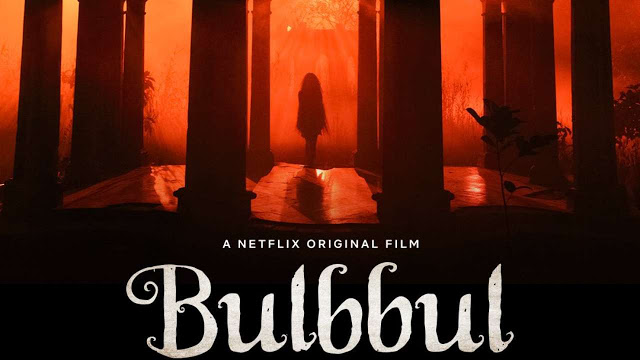In a bold move, actor and producer Aamir Khan has turned down a lucrative offer from Over-The-Top (OTT) services for his film Sitaare Zameen Par, choosing to debut it on YouTube for ₹100 instead. Could this signal a new direction for Indian film distribution?
In an unprecedented announcement, Aamir Khan declared that his recently successful film, Sitaare Zameen Par, will entirely skip traditional OTT platforms and will instead premiere on YouTube Movies-on-Demand starting August 1, 2025.
Viewers will be able to access the film through the Aamir Khan Talkies YouTube channel on a pay-per-view basis for ₹100.
The film will be available for rental on YouTube in 38 countries, including the USA, Canada, the UK, Australia, Germany, Indonesia, the Philippines, Singapore, and Spain, with prices adjusted for each region. Key languages will feature subtitles and dubbing.
This pay-per-view strategy allows viewers to pay a one-time fee for uninterrupted streaming of the film for 30 days. After starting to watch the movie, they must complete it within 48 hours.
Channel Information:
- Channel Name: Aamir Khan Talkies
- First Film: Sitaare Zameen Par
- Release Date: August 1, 2025
- Price: ₹100
- Validity: 30 Days (with 48 hours to finish once started)
- Ads: None
Sitaare Zameen Par has garnered notable attention for its inclusion of ten actors with intellectual disabilities alongside Khan and Genelia Deshmukh. The film’s positive reception has translated to significant box office success, earning ₹164 crore in India and approximately ₹67 crore internationally.
During the WAVES Summit 2025, Khan expressed his worries over the declining cinema business in India, referencing the decreasing number of theatres and the shrinking time frame between theatrical and OTT releases.
Before the emergence of OTT streaming, cinemas were the primary venue for film distribution. Typically, a movie would debut in theatres for six to ten weeks, with exceptions like Dilwale Dulhania Le Jayenge which ran for an astounding 1,200 weeks.
For those with DVD players, the wait for a home release usually lasted three to six months after the theatrical run, while those without had to wait six to twelve months before the film appeared on television.
The film distribution landscape began changing with the rise of streaming services in India, a shift that accelerated dramatically due to the COVID-19 pandemic. As a result, the typical theatrical release period has shrunk to around four weeks, with some films opting for direct OTT release instead.
As audiences are aware that films typically become available on their subscription-based OTT platforms within a month of their theatrical release, many are choosing to stream them online instead of paying rising cinema ticket prices.
In contrast, established OTT services like Netflix and Amazon Prime offer basic subscriptions at ₹149 and ₹125 per month, respectively.
“Fifteen years ago, I realized that only about 2.5-3% of people in India visited cinemas. Since then, I’ve been striving to connect with the remaining 97%,” Khan remarked at an event held prior to his film’s launch on YouTube.
He pointed to the decrease in cinema halls, geographical access limitations, the mobility issues faced by the sick and elderly, and a lack of affordable options as contributing to these figures.
His solution? YouTube. As highlighted by Comscore, a global measurement company, YouTube reaches four out of five Internet users in India aged 18 and older, with entertainment videos receiving over 7.5 billion views daily worldwide in 2024. Through YouTube, Khan aims to “reach every home in every village in India.”
While Khan had initially claimed that his film wouldn’t be available for streaming on YouTube, he later admitted to misleading the public, stating, “I lied to protect the theatre business.”
Gunjan Soni, country managing director of YouTube India, noted, “YouTube’s relationship with Indian cinema isn’t new.” She emphasized the tradition of releasing teasers, trailers, music videos, and other promotional content through the platform.
“The digital release of Sitaare Zameen Par on YouTube marks a significant advancement in democratizing Indian film distribution on a global scale,” says Soni, highlighting this groundbreaking decision. YouTube is positioning itself as a welcoming platform for Indian cinema. “The theatre is now in your pocket,” she added.
Khan, however, emphasized, “The theatre will always be my priority.” He further clarified that streaming his film on YouTube is distinct from streaming on traditional OTT platforms.
There is no payment from YouTube for the streaming rights, nor is Khan paying for the platform; instead, revenue will be shared each time someone rents the film.
Khan also suggested that he has no objections to OTT platforms, but believes their scheduling does not support the theatre ecosystem. “This is why I’m introducing this new model, with the hope of revitalizing cinema,” he said.
He reportedly turned down an offer of ₹125 crore for the streaming rights to Sitaare Zameen Par, stating, “I don’t want ₹125 crore from OTT; I prefer ₹100 from my audience.”
On August 1, 2025, Aamir Khan Talkies: Janta Ka Theatre will begin streaming Sitaare Zameen Par, and shortly after, the entire library of Aamir Khan Productions will be available for rental on the channel. This will include films such as Lagaan, Jaane Tu Ya Jaane Na, Taare Zameen Par, and Dangal.
Additionally, films produced by Khan’s father, Tahir Hussain, will also be featured on the platform.
Khan expressed his willingness to provide a platform for emerging talent for a nominal fee, remarking, “Half the films in India don’t get released because they can’t find a platform.”
He shared a personal story from the development of Sitaare Zameen Par, recalling how many advised him to create an action film, as those typically perform well in theatres. According to Khan, models like his would empower creatives to produce films of their choice without constant worries about financial viability.
Amid discussions about piracy that arose following this announcement, Khan mentioned that making films more affordable for the public could help mitigate these piracy issues.
YouTube asserts it has robust algorithms in place to protect copyrighted material from infringement.
As Indian theatres struggle with fewer patrons possibly driven by the allure of affordable and accessible digital alternatives, Aamir Khan’s innovative approach could redefine film production and distribution in India if proven effective.























